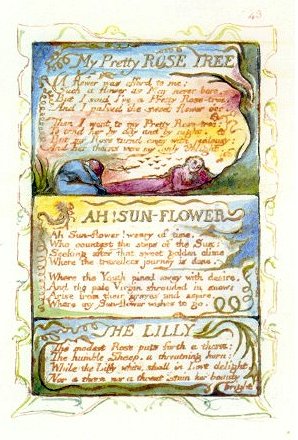I think that this poem is talking about wanting something or having a goal and it’s using the sunflower to represent the human spirit and its desire or goal. The sunflower’s goal is to be able to rise to the sun. In the second and third line it talks about how the sunflower counts the steps to get there and how it’s striving to get to that place. In that last line of the first stanza it says, “Where the traveler’s journey is done.” It is saying that once the sunflower reaches its destination, in sky with the sun it’s journey will be finished. I think that in the poem the journey is not only referring to the sunflower’s travel to the sun but to the sunflowers entire life. Since the sunflower represents the human spirit I think that the sunflower desiring to be with the sun is kind of like the human desire to end their journey in heaven. The significance of the sun being in the sky is that heaven is also associated with being in the sky. Next, Blake talks about how “youth pined” or how life wastes away longing with that desire to end its journey in heaven. In the second stanza the sunflower dies, “shrouded in snow” winter comes and the snow covers the sunflower. Blake uses the word shrouded to make that connection of the sunflower representing a human the sunflower like a human is being concealed with a shroud. A shroud is a burial cloth that’s used to cover a dead body. Now that the sunflower is dead, now that the human is dead, its spirit can rise from its grave and aspire what it has always wanted. The poem comes to an end with the line, “Where my sunflower wishes to go.” Blake is now also referring to himself saying that heaven is where his spirit wishes to go.
I later found out that the poem “Ah! Sunflower” is actually part of two other poems called “My Little Rose Tree” and “The Lilly” which are part of Blake’s book Songs of Innocence and Experience. The book was written to show the two different sides of the human soul.
Click the link below to read “Ah! Sunflower” and other poems that make up Songs of Innocence and Experience: http://theotherpages.org/poems/blake02.html


